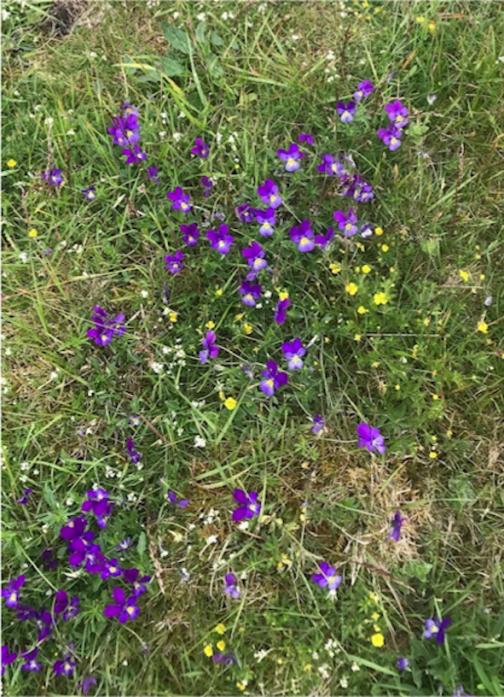
Mountain Pansy (Viola lutea)
MOST of us find it strange that the Latin name of this flower means yellow, when in the North Pennines it almost always has purple petals.
Yellow and cream forms do exist, but are not common except in the Craven district of Yorkshire, but many have white, cream or blue as well as purple present in their petals.
Perhaps the name comes from the bright yellow base of the lowest petal found in all colour forms and giving the flower the appearance of a yellow centre.
The solitary flower is about 2-3cm across and has the typical pansy “face” with a wide lower petal, two lateral ones and two looking almost like upright rabbit ears at the top.
The three lower petals have darker veins, possibly acting as nectar guides pointing towards the centre. There are five green, narrow, pointed sepals behind the petals and a longer, coloured, blunt spur pointing upwards.
Leaves are ovate and bluntly toothed, becoming narrower up the flower stem.
The leaf stalks have a pair of obvious palmately lobed stipules where they join the main stem. The whole plant is short and rather shrubby in appearance, reaching only about 10-20 cm depending on grazing pressure.
Plants are found throughout most of upland Britain but especially in the Pennines, Peak District, Wales, and Scotland south of the Great Glen, generally between 200m and 1,000m altitude. They are also present in central Europe in similar habitats.
It is a plant of mountain grassland, pastures and stony ground and often grows in areas associated with mining of heavy metals like lead and zinc. It is often found on old spoil heaps, for example, and being tolerant of heavy metals it is known as a metallophyte or a calaminarian species.
It can reproduce by seed, when the pollinating insects are usually bees,with the resulting individual plants fairly isolated, but also vegetatively from slender underground stems or rhizomes when extensive patches of similar plants carpet the flatter areas of grassland.
“Carpet” is a suitable term and the range of colours of the pansies. Other plants, such as heath bedstraw, heath speedwell and tormentil among the short grasses give the appearance almost of an expensive Persian carpet – surely one of the most beautiful sights in our North Pennines.
Viola lutea can hybridise with certain other pansies if they are present in the area and was no doubt used in the breeding of our familiar garden pansies, of which there are some 800 varieties.
If you are interested in learning more about botany then you are very welcome to join the Upper Teesdale Botany Group. Contact Dr Margaret Bradshaw on mebhilltop@btinternet.com so that we can invite you to our field meetings.
Alison M Donaldson





